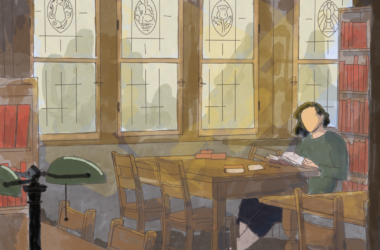Harry Potter author J.K. Rowling has been in the news regularly for her steadfast refusal to let her series fade from public consciousness. These efforts range from small pieces uploaded to the website, pottermore.com, to the addition of an entirely new instalment in the form of a play script. In the past few weeks, she has once again set critics aflame on social media, this time with an added tidbit about how her character Remus Lupin’s affliction of werewolfism—also known as lycanthropy—is really a metaphor for HIV.
The main criticisms come at the issue from two different angles, although one is angle is more compelling than the other. One side sees the lycanthropy metaphor as a lazy, unimaginative, and quite problematic way to represent HIV. The other, more intriguing, argument is that her reveals are not genuine, and are simply a retrospective re-writing of her works in order to make them more inclusive to today’s more progressive audience.
Lycanthropy as a metaphor for HIV is poorly thought out. It is problematic in that it helps reaffirm a couple of the most harmful stigmas against those with HIV—that they wilfully spread the illness, and that the general public should be wary of those with HIV.
The claims made by the second group of critics are a bit more interesting. It is undeniable that Harry Potter is not a progressive story. It is not regressive, per se, but it certainly makes no effort to be diverse. It is, overall, a series that deals mainly with the issues of straight, white, able-bodied, and middle-class people, with the occasional outlier thrown in. Given that the first installment was published almost two decades ago, it is certainly at odds with a more modern readership who, as time goes on, want more and more representative literature.
Considering the economic and cultural posterity of the canon, it’s easy to see why Rowling would intentionally change the meaning of her works in order to make them more relevant to a contemporary audience. However, her motivation to be inclusive in her writing is questionable and inconsistent. For example, she is willing to accept interpretations that Hermione is black, but is adamant that Draco Malfoy was and is completely straight.
Rowling appears to believe it necessary that the general public considers her works as wholly inclusive of minority characters, although the work in question does not actually deal with being a minority. Writing a story about a white character, and going back to change all of the physical characteristics to fit those of a black character, does not do enough to make the story inclusive of black narratives; it comes across as disingenuous.
Inclusive works and the visibility of minorities within art is crucial. Being able to identify with characters in books is a wonderful feeling, and works that acknowledge their minorities without using them as token characters are most important. The more audiences praise inclusive media without being critical of its execution, the more diversity is used for the sake of diversity, and the further audiences get from art for art’s sake.








